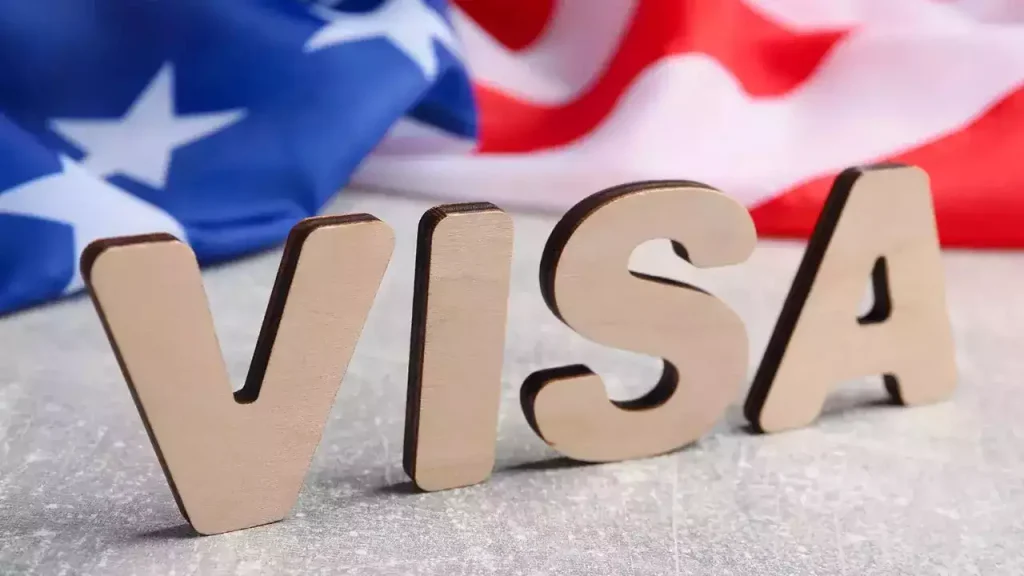Rajkotupdates.news: The US is on track to grant more than 1 million visas to indians this year: In recent years, the United States has emerged as a beacon of opportunity for individuals worldwide, particularly for Indian nationals seeking education, employment, or travel experiences. This year, the U.S. is on track to grant more than 1 million visas to Indian applicants, marking a significant uptick in visa issuances. This article explores the types of visas available, statistical trends, underlying factors for the increase, and the challenges faced by applicants.
Overview of U.S. Visa Categories

The U.S. offers various visa categories to accommodate the diverse needs of Indian applicants.
Work Visas
Work visas such as H-1B for specialty occupations, L1 for intra-company transfers, and others have been popular among Indian professionals. These visas allow individuals to work and live in the U.S. for a specific period.
Student Visas
Student visas, notably the F1 and J1, enable Indian students to pursue their studies in numerous high-ranking U.S. educational institutions, often leading to opportunities for optional practical training (OPT) in their field of study.
Visitor Visas
Visitor visas, including B1 (business) and B2 (tourism), are issued to Indians traveling to the U.S. for business engagements or tourism purposes, highlighting the cultural and economic exchanges between the two nations.
Statistical Trends
The number of visas issued to Indians has seen a notable increase over the past decade.
Recent Years’ Data
Data from the U.S. State Department shows a steady increase in visa grants, with spikes in work and student visa categories.
Projected Trends for the Current Year
Predictions for this year indicate that over 1 million visas may be granted, a record number that underscores the growing ties between the U.S. and India.
Factors Influencing Increased Visa Approvals
Several factors contribute to the higher number of visas being approved for Indian nationals.
Political Factors
Changes in U.S. immigration policy and India-U.S. bilateral relations play a significant role in visa issuance policies.
Economic Factors
The robust economic growth in sectors like technology, where Indians are a significant workforce, influences the number of visas issued.
Educational and Cultural Exchanges
The increase in educational and cultural exchanges has also facilitated a higher number of student and exchange visitor visas.
Challenges and Issues
Despite the growth in visa issuances, applicants
face several challenges.
Documentation Challenges
Applicants often struggle with the extensive documentation required for visa applications.
Visa Interview Process
The visa interview process can be daunting. However, being well-prepared can significantly ease the process
Also Read: Wellhealthorganic.com: Easily Remove Dark Spots Lemon Juice.
Conclusion and Future Outlook
As the U.S. continues to open its doors to Indian nationals, the trend of increased visa issuances is expected to continue, reflecting the strong ties between the two countries and the mutual benefits of their interaction.
FAQs
The United States offers a variety of visa categories to Indian nationals, depending on their purpose of travel. The main types include:
Work Visas: Such as H-1B for specialty occupations, L1 for intra-company transfers, and O1 for individuals with extraordinary abilities.
Student Visas: Including F1 for academic purposes and J1 for cultural and educational exchange programs.
Visitor Visas: B1 for business-related visits and B2 for tourism or visiting family and friends.
Immigrant Visas: For those intending to live permanently in the U.S., including family-sponsored and employment-based categories.
U.S. visa policies have undergone several changes in recent years aimed at enhancing security, improving the efficiency of the visa process, and fostering bilateral relations with countries like India. Policies have also adapted to technological advancements and global economic trends, sometimes becoming stricter and at other times more lenient based on the prevailing political climate.
Common challenges include:
Extensive Documentation: Applicants must provide detailed documentation proving their eligibility, which can be time-consuming to compile.
Lengthy Processing Times: Depending on the visa category and the applicant’s background, processing times can be lengthy.
Visa Interviews: The interview can be stressful as it plays a critical role in the decision-making process. Applicants must demonstrate their travel purpose and intention to return to their home country.
The bilateral relations between the U.S. and India significantly impact visa policies. As both nations strengthen their strategic, economic, and cultural ties, there has been a more considerable facilitation of travel between the two countries. This is reflected in the increasing number of visas issued, especially in categories like work and student visas, which support the mutual benefits of educational and technological collaboration.
| Homepage | Click Hear |

